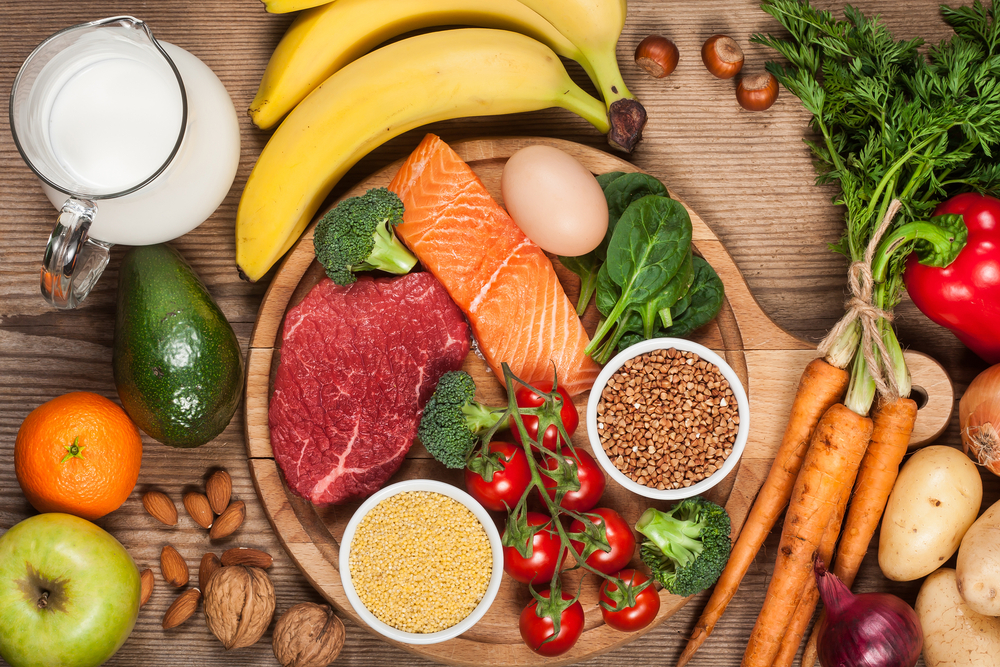Protein-rich Diet May Help Control Weight in PWS Youth
Written by |

Consumption of a high-protein diet shifts muscle cells’ metabolism to use fats rather than carbohydrates as an energy source in children and young adults with Prader-Willi syndrome (PWS), a pilot study in Canada suggests.
The findings support the need for more studies to assess the implications of different types of diet in young PWS patients, and whether a high-protein diet could be a therapeutic option to enhance energy balance and weight maintenance in this patient population, the scientists said.
The study “Effect of High Protein Diet on Postprandial Energy Expenditure in Children with Prader-Willi Syndrome: a pilot and feasibility study” were published in teh journal Current Developments in Nutrition.
Children with PWS have unsatiable hunger (hyperphagia) and are at risk of weight gain and obesity. It is believed that an imbalance of hormones — such as the growth hormone, thyroid hormones and testosterone — may lead to an overall reduction of energy expenditure and contribute to obesity in PWS.
Diet-induced thermogenesis (DIT) follows the ingestion of food, and refers to the subsequent increase in energy demand for digestion, nutrient absorption and storage. DIT contributes about 10–15% of the total energy expenditure, which corresponds to the number of calories burned.
The nutrient composition of meals is known to alter energy expenditure. In adults, meals with higher protein content enhance DIT and contribute to a greater energy expenditure, which promotes weight maintenance or loss.
Boosting DIT by changing diet composition could help PWS patients maintain their weight, but few studies have examined DIT in these patients.
In this study, researchers at the University of Alberta, Canada, investigated whether it would be possible to measure the increase of energy expenditure, which reflects DIT, in young PWS patients eating different diets.
The study included five PWS patients, four of them female, ages 10 to 25 (mean age 15).
The study was performed over three visits, all in the morning after an eight-hour fast. In the first visit (baseline), the researchers measured participants’ body parameters and energy expenditure during rest. On the test days (visits two and three) the participants were assigned randomly to receive a high-protein diet or a standard Canadian diet. Each visit was separated by two to four weeks.
The high-protein diet contained 50% of protein, 20% carbohydrates (which most commonly include sugars, fibers, and starches) and 30% fat; the standard diet had 15% of protein, 55% carbohydrates, and 30% fat. Both diets included meals for a full day. Weight and height were measured during all visits.
Whole body calorimetry unit was used to evaluate calorie consumption. (It measures resting metabolic rate.) All patients continued their growth hormone therapy during the study.
At the first visit, mean resting energy expenditure (REE), the rate of calorie consumption while resting, was 1,686 kilocalories (kcal). The mean REE after a standard meal was 1,590 kcal and after a high protein meal it was 1,651 kcal.
However, the change in energy expenditure was not significantly different between the diets.
The researchers also measured the respiratory exchange ratio (RER), which is the ratio between the production of carbon dioxide and the oxygen consumed. RER is an indirect measure of the muscle’s capacity to absorb energy, increasing with the intake of carbohydrates and lowering after a high-fat meal.
Results showed that mean RER was significantly lower following the high-protein meal compared to the standard meal (mean 0.80 vs. 0.87), suggesting a a shift toward fat rather than carbohydrates as a fuel source.
Overall, this study represents a “first step in understanding the metabolic implications of a high-protein diet in children and youth with PWS as a therapeutic option to improve overall energy balance and weight maintenance,” the scientists wrote. “Despite the high participant burden required, it is feasible to conduct this metabolic test in children and youth with PWS.”
Larger studies including a control group are needed to further compare the effects of different diets on DIT in children with PWS, they added.





